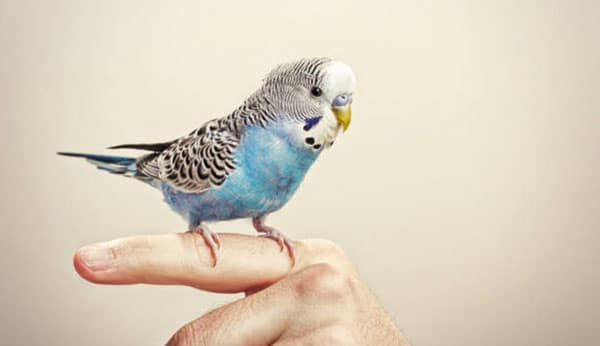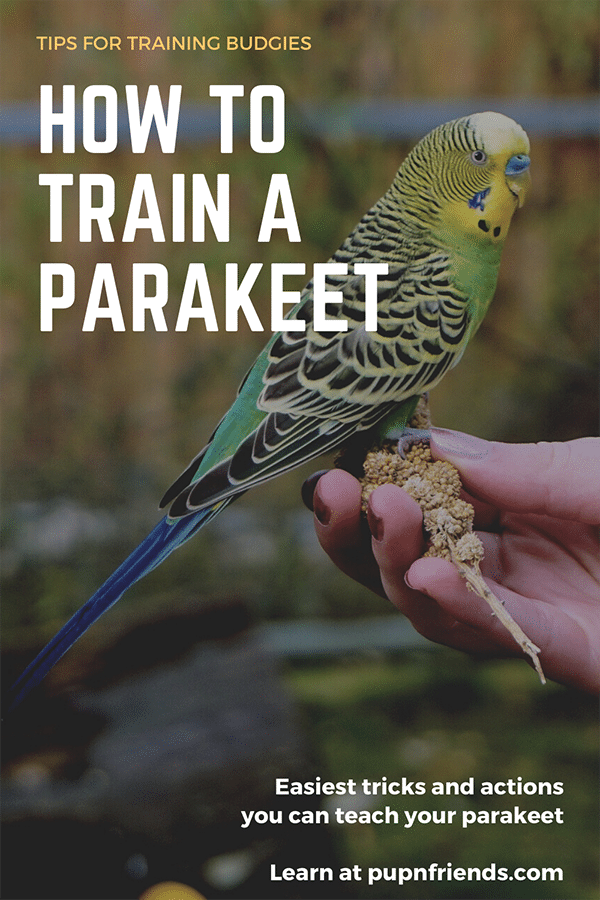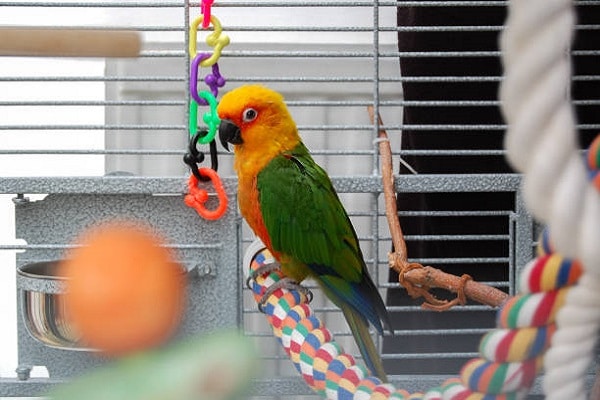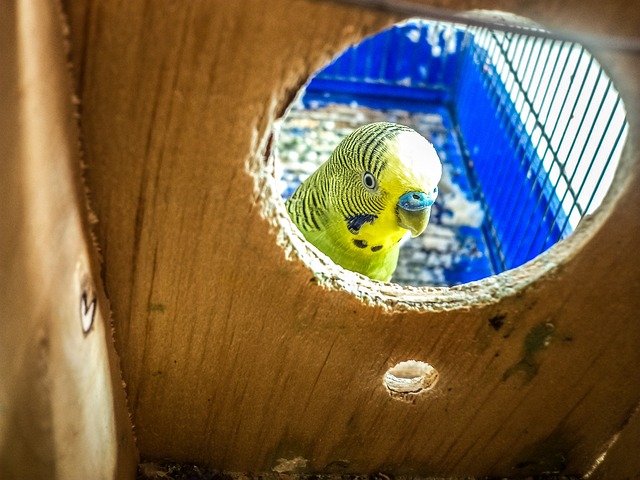If you are an avid fan of birds, there’s a pretty good chance that you have a bird as a pet. The most common bird pet is the humble but brightly colored budgerigar, or parakeet. Often referred to as “budgies,” these pretty little birds are tinier cousins of the rainbow macaws and blue macaws everyone loves to see. However, parakeets are much less costly to feed and easier to keep indoors than the massive macaws. A budgie or parakeet with proper care may only live about a decade, give or take a few years, which is in high contrast to the sixty to one hundred years that a macaw can live.

On that note, you may be wondering how to train a parakeet and if you can train a parakeet just as easily as you train a macaw/parrot. The truth is, both of these pet birds are neither more nor less difficult to train. It takes a persistent and consistent trainer to train either type of bird to do whatever you want it to do. If you do decide to buy a parakeet and want to train it, it helps to know that you should start with just one bird. Then you should follow some good tips on how to train a parakeet, like the tips below.
Pick the Perfect Time to Train
Birds learn best on a schedule. Pick a time of the day where you know you will not be rushed and can invest the time to train your little avian friend. If you know that the hour before dinner is the time you have free every night, do the training then. If you want to get up at sunrise every day before school or work to train your parakeet, you might get faster results because your parakeet will be waking with the sun and will be very active and engaged with you.
Stay Consistent
Birds can learn, but only if you are consistent. If you start training your budgie buddy and then just stop for a week, a month or more, he/she will forget what you were trying to teach him/her. Then you have to start all over and stick to the training until your pet has the trick or desired behavior down pat.

Choose One Thing to Train at a Time
Bird brains can be clever, but they are not so high-functioning that they can process several pieces of information at once. Choose one thing, and one thing only, at a time to teach your bird. One of the first things most bird owners choose to teach their feathery friends is how to sit on a finger. Because a parakeet’s natural instinct is to fly away from a predator and your hand coming into the cage doesn’t look friendly, it will avoid your attempts for a finger-sit for a long time.
However, if you talk quietly, and leave your hand sitting inside the cage with a finger pointing out, eventually your bird will come around. You can encourage greater success if you hold a treat between thumb and index finger. Then your little birdie will want the treat and be willing to sit on your index finger to get it. You just have to remain quite still for a long time every day until he/she gets it and continues to sit on your finger until you can slowly take him/her out of the cage.
If you would like to teach your budgie how to speak (and yes, they can learn to speak just like parrots/macaws), then pick a single word. If your goal is to get him/her to speak full sentences, keep it short; three words is good, two words is best. Try something like “treat” or “treat please” to get your bird to ask for a treat. Then reward the request to get him/her to continue making that request on his/her own without prompts. You get the idea.
How to Train a Parakeet to Give You a Kiss
One of the most endearing of all tricks to teach a parakeet is teaching it to give you a “kiss.” This is where you lift the bird on a finger near your lips and your bird gently nudges your lips with its beak. This is an intermediate trick, of course, because it requires you to teach your bird first to sit on a finger without flying away. Then you have to teach it how to “kiss” you without biting you by accident or intentionally.
When you have a mating pair of parakeets, they use their beaks to kiss each other, but because the beaks are hard and sharp, they are not concerned with hurting each other. If they do the same to you, they can hurt because you don’t have a hard beak. So you have to teach them to just lightly tap your lips with a beak.
You can do this by offering a seed or small piece of fruit between your lips. Your bird will eventually take the treat and begin tapping your lips to get more. Reward the correct behavior to get your bird to keep “kissing” you.
Training Your Parakeet to Be a Warning Alarm
Parakeets can be very loyal pets. They will make a lot of noise when strangers approach their cages, but that also makes them good “watchdogs.” As such, you can train them to recognize family by having your family give them treats and talk to them.
Anyone not familiar to your bird(s) that does not give them a treat on arrival warrants a screeching warning. Hence, your birds will alert you to intruders. Some parakeets become so adept at this that they will even use a different chirp or greeting for each family member, alerting you to who’s come home and who hasn’t.

Training Your Parakeet to Play
Parakeets can play with small toys, bells, mirrors, etc.. One way to train these birds to play with you is to start with a cat ball that is open with a bell inside. Gently roll the ball up to your parakeet on a table (after he/she has learned to sit with you without flying away).
Roll the ball back and forth slowly between you and the bird. It will take a lot of time to get this play activity down, but you can speed it up by putting a seed inside the toy with the bell. Then your little friend will attempt to pick up the ball with his/her beak or claw to get the seed and then try to roll it.
When your parakeet learns to play with you instead of near you, you can try other toys and means of playing. These birds are like any other pet in that they will choose their favorite toys. Ergo, you will have to experiment a lot with different toys to find the ones that interest your parakeet the most.
Training a Second or Subsequent Parakeet
After you have spent countless months or even years training your first bird, you may want to add a second (or subsequent) bird to your cage. If you also want to train this bird, use your most well-trained bird to help the untrained bird.
Birds will often copy what they see other birds do, and your trained bird will help the untrained bird catch on to the routine of things. Most people find that training another bird after they have a well-trained bird already in the cage results in faster training of the second/additional bird(s).
Save it For Later





